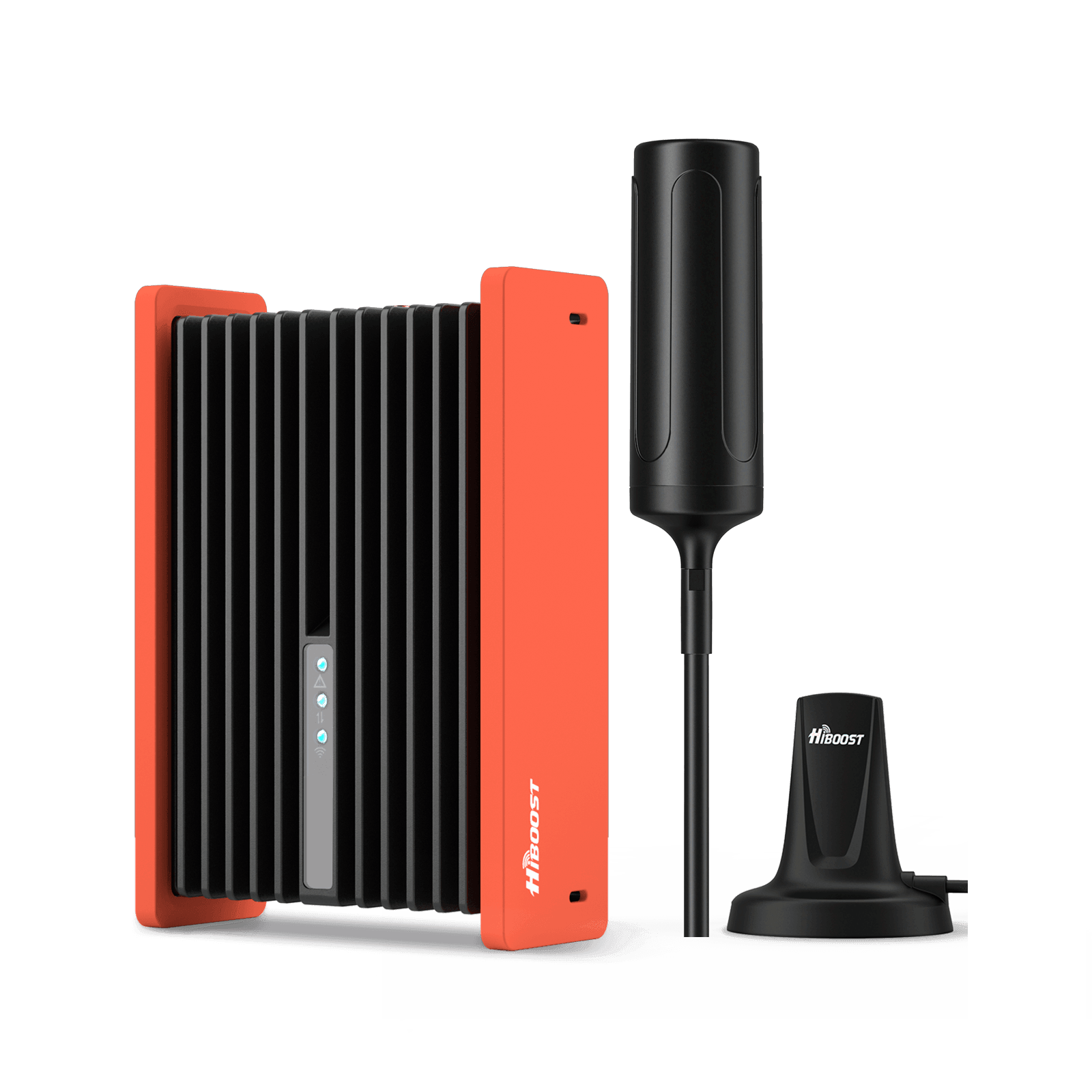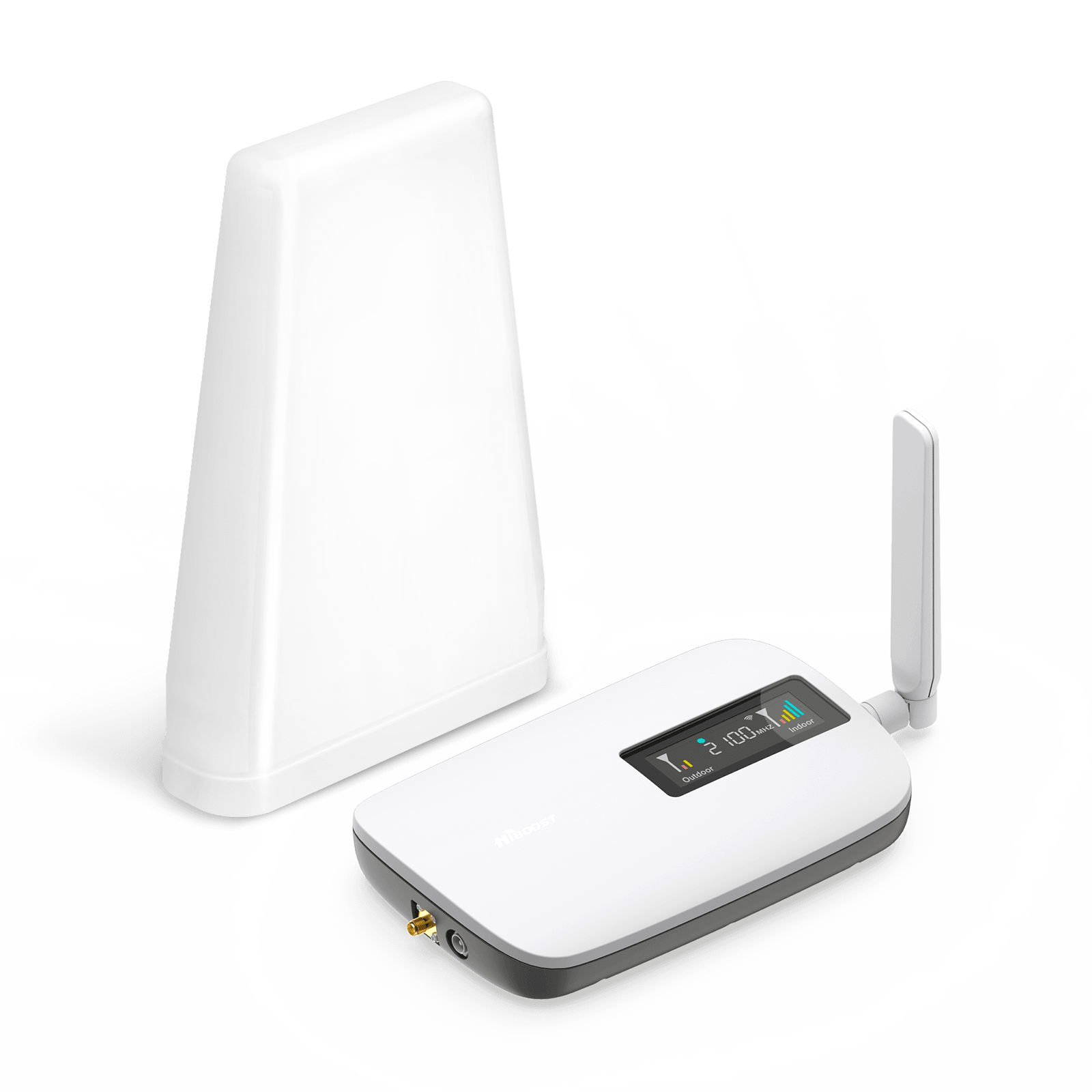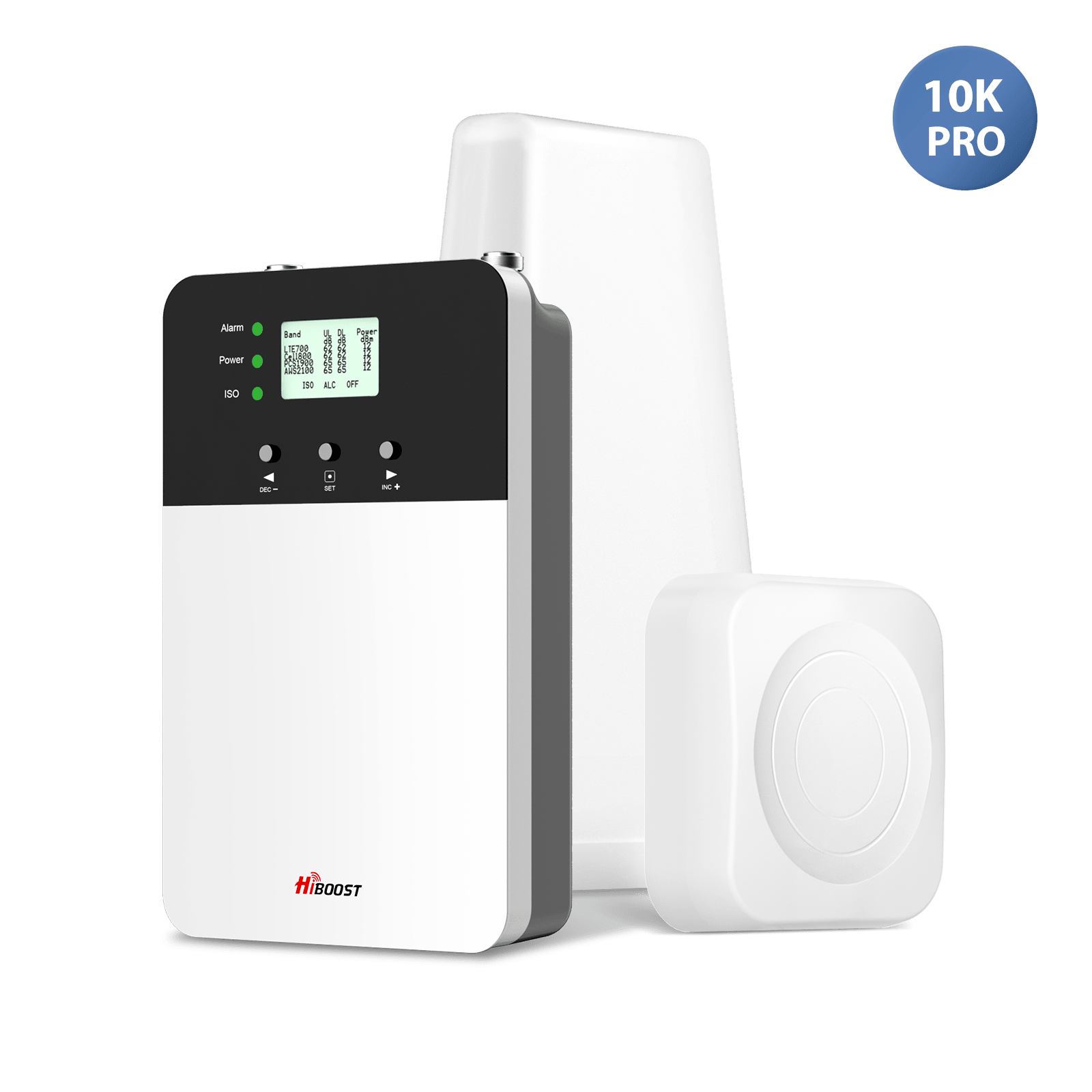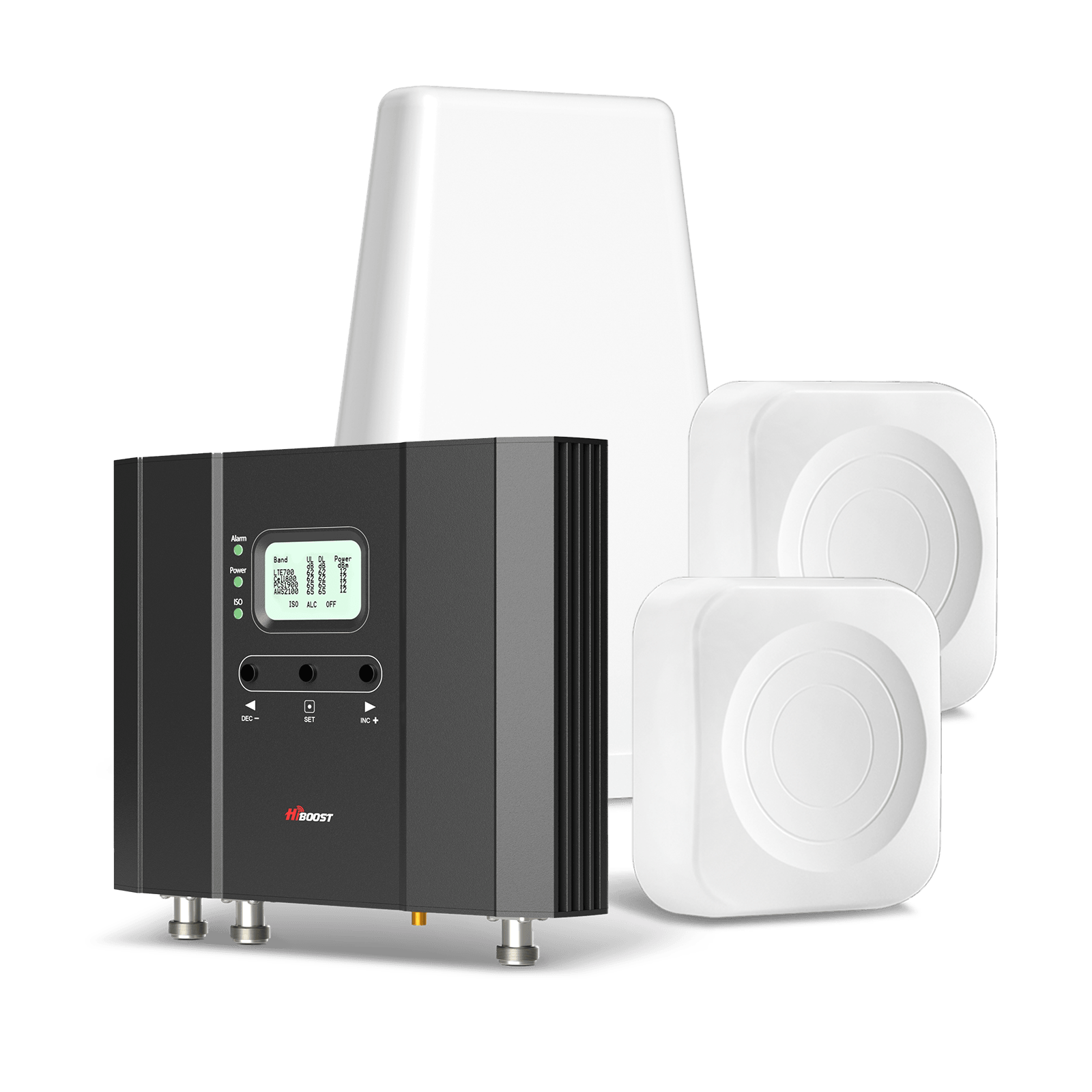Table of Contents
Struggling with dropped calls and slow data? It’s time to get serious about understanding your cell phone signal strength. Testing signal strength the right way isn’t just about checking the bars on your phone.
To get an accurate reading, you need to dive into the signal’s dBm (decibel-milliwatts) level. Whether you’re at home, in the office, or traveling in your RV, knowing how strong or weak your signal is can help you find solutions to boost it.
In this guide, we’ll show you how to test your cell phone signal like a pro, ensuring reliable connectivity wherever you go.

Signal Strength Bars: Not the Best Way to Test Cellular Signal StrengthWhen assessing your cellular signal strength, the signal strength bars on your phone may not provide the most accurate picture. Here’s why:
1. Signal Strength Bars Can Be MisleadingSignal strength bars are a rough estimate of your connection quality, not a precise measurement. Different phone models and manufacturers use varying scales to represent signal strength, making it hard to compare accuracy across devices. For example, a phone with more bars might not necessarily have a better signal than one with fewer bars.
2. Bar Interpretation Varies by CarrierEach cellular carrier has its way of interpreting signal strength bars. What appears as a full bar on one network might be different on another. This inconsistency can lead to confusion and misinterpretation of the actual signal quality you’re experiencing.
3. External Factors Impact Signal AccuracySeveral factors, such as physical obstructions, interference from other electronic devices, and environmental conditions, can impact signal strength. Relying solely on signal bars might not account for these variables, leading to an inaccurate assessment of your connection quality.
For a more accurate evaluation of your signal strength, consider using a signal meter or a dedicated app designed to provide detailed insights into your cellular connectivity.
What Is the Difference Between Signal Strength and Signal Quality?
Understanding the difference between signal strength and signal quality is crucial for optimizing your wireless network experience. Both terms are often used interchangeably, but they refer to different aspects of network performance.
Signal Strength
Signal strength refers to the power of the signal being received by your device. It is typically measured in decibels (dB) and indicates how strong the signal is when it reaches your device.Higher signal strength generally means a better connection, allowing for smoother data transmission and fewer interruptions. However, strong signal strength alone does not guarantee a high-quality connection if other factors are at play.
Signal Quality
Signal quality, on the other hand, measures the clarity and reliability of the signal. It takes into account factors such as interference, noise, and data integrity. High signal quality means that the signal is not only strong but also clear and stable, leading to fewer errors and better overall performance. Even with a strong signal, poor signal quality can result in slow speeds and frequent disconnections.
In summary, while signal strength measures the power of the signal, signal quality assesses its overall performance and reliability. Both are essential for a seamless and efficient wireless experience.
dBm: The Most Accurate Way to Test Cell Phone Signal Strength
When it comes to assessing cell phone signal strength, precision is key. The most accurate method to measure this is by using dBm (decibels milliwatt). Here's why dBm is the gold standard for testing cell phone signal strength:
1. Understanding dBm
dBm is a logarithmic unit used to measure the power level of a signal. It expresses signal strength in decibels relative to one milliwatt (mW).
Unlike linear units, dBm provides a more nuanced view of signal strength, making it easier to understand and compare signal levels.
2. Why dBm Matters
Using dBm to measure signal strength offers several advantages. It allows for precise measurement of both weak and strong signals. A higher dBm value indicates a stronger signal, which can lead to better call quality and faster data speeds.
Conversely, a lower dBm value signals weaker reception, which might result in dropped calls or slower internet connectivity.
3. How to Measure with dBm
To accurately test your cell phone signal strength using dBm, you’ll need a signal strength meter or a specialized app. These tools provide detailed readings that help you identify areas with strong or weak signals, allowing you to make necessary adjustments or seek solutions to improve connectivity.
By relying on dBm, you ensure a precise assessment of your cell phone signal strength, which is crucial for optimizing your mobile experience.

What’s a Good Signal Strength for a Cell Phone?
Signal strength is crucial for a reliable and uninterrupted mobile experience. Understanding what constitutes good signal strength can help you ensure you’re getting the most out of your cell phone service.
1. Understanding Signal Strength Indicators
Signal strength is typically measured in decibels milliwatts (dBm) and is displayed on your phone as bars. The scale ranges from -50 dBm (excellent) to -120 dBm (poor). For most users, a signal strength between -50 dBm and -70 dBm is ideal. This range ensures strong connectivity, fast data speeds, and clear voice calls.
2. Ideal Signal Strength for Optimal Performance
A signal strength of -50 dBm to -70 dBm is considered excellent to good, providing reliable service and minimal dropped calls. If your signal strength falls between -70 dBm and -85 dBm, it’s still acceptable but may result in occasional issues. Anything below -85 dBm often leads to noticeable problems, such as slow data speeds and poor call quality.
3. Improving Signal Strength
If you’re experiencing weak signal strength, consider using signal boosters or network extenders to enhance coverage. Additionally, positioning your phone near a window or avoiding physical obstructions can help improve reception.
Monitoring and optimizing your signal strength ensures you stay connected and enjoy the best mobile experience possible.
How to Accurately Test Cell Phone Signal Strength
Testing your cell phone signal strength accurately is essential for ensuring reliable connectivity and optimizing your mobile experience. Here’s a step-by-step guide to help you measure your signal strength effectively:
1. Check Signal Bars on Your Phone
Most smartphones display signal strength using bars on the status bar. While this is a quick indicator, it’s not always precise. To get a clearer picture, use your phone’s settings to view detailed signal metrics. Navigate to your phone’s settings, find the “About Phone” or “Network” section, and look for signal strength measured in dBm (decibels milliwatts).
2. Use a Signal Strength App
Several apps are available that can provide more detailed information about your signal strength. Apps like “Signal Strength” or “Network Cell Info Lite” offer real-time data, including signal strength, signal-to-noise ratio, and network type. These apps can help you pinpoint areas with weak signals and track performance over time.
3. Conduct Signal Strength Tests in Different Locations
To get an accurate assessment, test your signal strength in various locations around your home, office, or other frequently visited areas. This will help identify signal dead zones and determine the best spots for optimal connectivity.If you notice significant variations, consider using a signal booster or
adjusting your phone's placement for better reception.
By following these steps, you can ensure you have a clearer understanding of your cell phone’s signal strength and improve your overall connectivity.
How to Read Your iPhone Cell Signal?
Curious about what those signal bars on your iPhone really indicate? Understanding your iPhone's cell signal strength can be a game-changer for improving connectivity. Here’s a quick guide to decoding it:
1. Signal Bars
The most common way to gauge your cell signal is through the signal bars in the top-left corner of your screen. These bars represent the strength of your connection; more bars typically mean a stronger signal. However, this is a relative measure and doesn’t provide exact details.
2. Field Test Mode
For a more precise measurement, you can use your iPhone’s Field Test Mode. To access this, dial 3001#12345# and press the call button. This opens a detailed screen showing the signal strength in decibels (dBm).The closer the number is to 0, the stronger the signal. A signal strength of -50 dBm is excellent, while anything below -100 dBm indicates poor connectivity.
3. Signal Quality Indicators
Your iPhone also shows 3G, 4G, or 5G icons, indicating the type of network connection you’re using. 5G offers the fastest speeds, followed by 4G, and then 3G. This can affect your overall data performance and call quality.
By understanding these indicators, you can better manage your network connectivity and troubleshoot issues effectively.
How to Read Your Android Cell Signal?Understanding your Android cell signal strength can be crucial for optimizing your connectivity. Here’s a simple guide to help you interpret what your signal indicators mean:
1. Check Signal Bars
The most common way to gauge signal strength is through the signal bars on your phone’s status bar. Generally, more bars indicate a stronger signal. However, this is a rough estimate and might not reflect the exact strength.
2. Access the Signal Strength Indicator
For a more precise measurement, go to **Settings** > **About Phone** > **Status** > **SIM Status**. Here, you’ll find the signal strength in dBm (decibels milliwatts). A value closer to -50 dBm signifies excellent signal strength, while -120 dBm or lower indicates poor reception.
3. Use Field Test Mode
For an even more detailed analysis, you can use your phone’s Field Test Mode. Dial *3001#12345#* and press the call button. This will open a menu with detailed signal strength information, including signal quality and network type.
4. Consider Signal Interference
Remember, physical obstructions like walls or electronic devices can affect signal strength. If you frequently experience weak signals, consider using a signal booster to improve reception.
By understanding these indicators, you can better manage your connectivity and troubleshoot signal issues more effectively.
Are There Different Ways to Measure Cell Phone Signal Strength?Yes, there are several ways to measure cell phone signal strength, each offering different insights:
1. Signal Bars: The simplest method, showing a general idea of signal strength. More bars usually mean a better signal, but it’s a relative measure.
2. dBm Readings: For a precise measurement, check the dBm (decibel-milliwatts) level using Field Test Mode on your phone. This provides a numeric value indicating signal strength, with -50 dBm being excellent and -120 dBm being poor.
3. Signal Quality Apps: Specialized apps can offer detailed signal analysis, including network type, signal strength, and potential dead zones.
Using these methods, you can accurately assess and improve your cell phone signal.

What Causes Poor Signal Strength?Poor signal strength can be a frustrating issue, impacting everything from call quality to internet speeds. Understanding the common causes can help in troubleshooting and improving your connectivity. Here are some key factors:
1. Physical Obstacles
Physical barriers like walls, floors, and large objects can obstruct signal transmission. Materials such as concrete, metal, and thick wood are particularly problematic, as they can significantly weaken the signal.
2. Distance from the Router or Tower
The farther you are from your signal source, whether it's a Wi-Fi router or cellular tower, the weaker the signal you’ll receive. Signal strength decreases with distance, so being closer to the source generally results in a better connection.
3. Interference from Other Devices
Electronic devices and appliances can interfere with signal strength. Devices such as microwaves, cordless phones, and other wireless
networks can cause signal disruption, leading to decreased performance.
4. Network Congestion
High traffic on a network can lead to congestion, causing slower speeds and weaker signals. During peak usage times, multiple users connecting to the same network can strain available bandwidth.
5. Outdated Equipment
Old or outdated hardware, including routers and modems, might not support the latest technology or standards, resulting in poor signal strength. Upgrading your equipment can often resolve these issues.
Addressing these factors can help improve your signal strength, ensuring a more reliable and efficient connection.
Why Is My Signal Strength Weak When I Can See the Tower?Seeing a cell tower but still experiencing weak signal strength can be frustrating. Additionally, network congestion or technical issues at the tower itself may impact signal quality, despite its proximity. Here are some key factors:
1. Distance from the Tower
Even if you can see the cell tower, you may still be far away from it. Signal strength diminishes with distance, especially if there are obstacles or buildings between you and the tower. The farther you are, the weaker the signal you’ll receive.
2. Obstacles and Interference
Buildings, trees, and even weather conditions can interfere with signal transmission. These obstacles can block or weaken the signal, making it difficult for your device to maintain a strong connection, even if the tower is visible.
3. Tower Load and Capacity
Cell towers have a limited capacity to handle connections. If the tower is overloaded with users, your signal strength may suffer. High traffic times can exacerbate this issue, resulting in weaker signals even if you’re
within sight of the tower.
4. Device and Antenna Issues
Your device’s antenna might be malfunctioning or not as effective at picking up weak signals. Checking your device settings, updating software, or using a signal booster can help improve reception.
Understanding these factors can help you troubleshoot and improve your signal strength, ensuring a better connection even when you can see the tower.
How Do I Increase Cell Phone Signal Strength?Experiencing weak cell phone signals can be frustrating, especially when you need reliable connectivity. Fortunately, there are effective solutions to boost your cell phone signal strength.
Here’s how you can enhance your signal using our most popular multi-carrier cellular amplifiers:
HiBoost Home MultiRoom-4K Plus

The HiBoost Home MultiRoom 4K Plus is a powerful amplifier designed to boost cell signals throughout multiple rooms in your home.
This device is perfect for large homes or spaces where signal strength varies between different areas.
With its advanced technology, it improves voice and data signals for all major carriers, ensuring consistent and reliable connectivity.
It’s easy to install and supports multiple devices simultaneously, making it a top choice for households with high connectivity needs.
HiBoost Single Room-Hero

For those seeking a solution for a single room, the HiBoost Single Room Hero is an excellent option. This amplifier is ideal for small offices, bedrooms, or any area where you experience signal drops.
It enhances both voice and data signals, providing a stable connection for calls, texting, and internet use. The compact design and straightforward installation make it a hassle-free choice for improving signal strength in a targeted area. If your signal issues are localized, this device delivers impressive performance where you need it most.
HiBoost Whole Home-10K Plus Pro

The HiBoost Whole Home-10K Plus Pro is a high-end amplifier designed for comprehensive coverage in large homes or commercial spaces. This powerful unit boosts signals across the entire property, ensuring consistent connectivity throughout.
It supports multiple carriers and a high number of devices, making it perfect for families, offices, or businesses with extensive signal requirements. The advanced technology and superior range of the 10K Plus Pro guarantee improved signal strength even in challenging environments.
By choosing the right HiBoost amplifier for your needs, you can significantly enhance your cell phone signal strength, ensuring reliable connectivity and improved performance.
How do you read your mobile signal strength? Reading your mobile signal strength involves more than just checking the signal bars on your device. For a precise measurement, you can access the dBm (decibel-milliwatts) value through your phone’s Field Test Mode. On most smartphones, dialing *3001#12345#* reveals this detailed signal data. A stronger signal is indicated by a dBm value closer to -50, while values closer to -120 signify weaker coverage. This detailed reading helps you assess and address connectivity issues effectively.
How do I improve ,and boost signal on my Mobile phone? Improving and boosting your mobile phone signal can be achieved through several effective methods. Start by repositioning yourself to find a spot with better reception, often near windows or higher floors. Consider using a signal booster or repeater to enhance connectivity.
Ensure your phone’s software is up-to-date, as updates can fix network-related issues. Lastly, remove any physical obstructions or interference, like thick walls or electronic devices, to improve signal strength.
What do bars on a cell phone represent? The bars on a cell phone represent the strength of your signal connection to the nearest cell tower. They provide a quick, visual indicator of signal quality, with more bars typically indicating a stronger connection. However, this measure is relative and doesn’t give precise details. For a more accurate understanding, it’s better to check the dBm levels through your phone’s Field Test Mode, which reveals the exact strength of the signal in decibels.Testing your cell phone signal strength accurately is crucial for maintaining reliable connectivity and optimizing your mobile experience.
By using methods like checking signal bars, accessing dBm readings through Field Test Mode, and leveraging specialized signal quality apps, you can gain valuable insights into your signal strength. At HiBoost, we understand the importance of a strong and consistent connection. Our range of signal boosters and accessories are designed to enhance and stabilize your signal, ensuring you stay connected wherever you are. Invest in HiBoost solutions to boost your signal strength and enjoy uninterrupted communication.
Similar Articles
How To Test Cell Phone Signal Strength On Your Phone
8 Ways to Boost Cell Phone Signal Strength for Free
How To Measure Signal Strength In Decibels On Your Cell Phone?
How To Boost Your Cell Phone Signal To Get The Best Bars
Cellular Signal Strength VS . Signal Quality : What’s The Difference?






Leave a comment
All comments are moderated before being published.
This site is protected by hCaptcha and the hCaptcha Privacy Policy and Terms of Service apply.